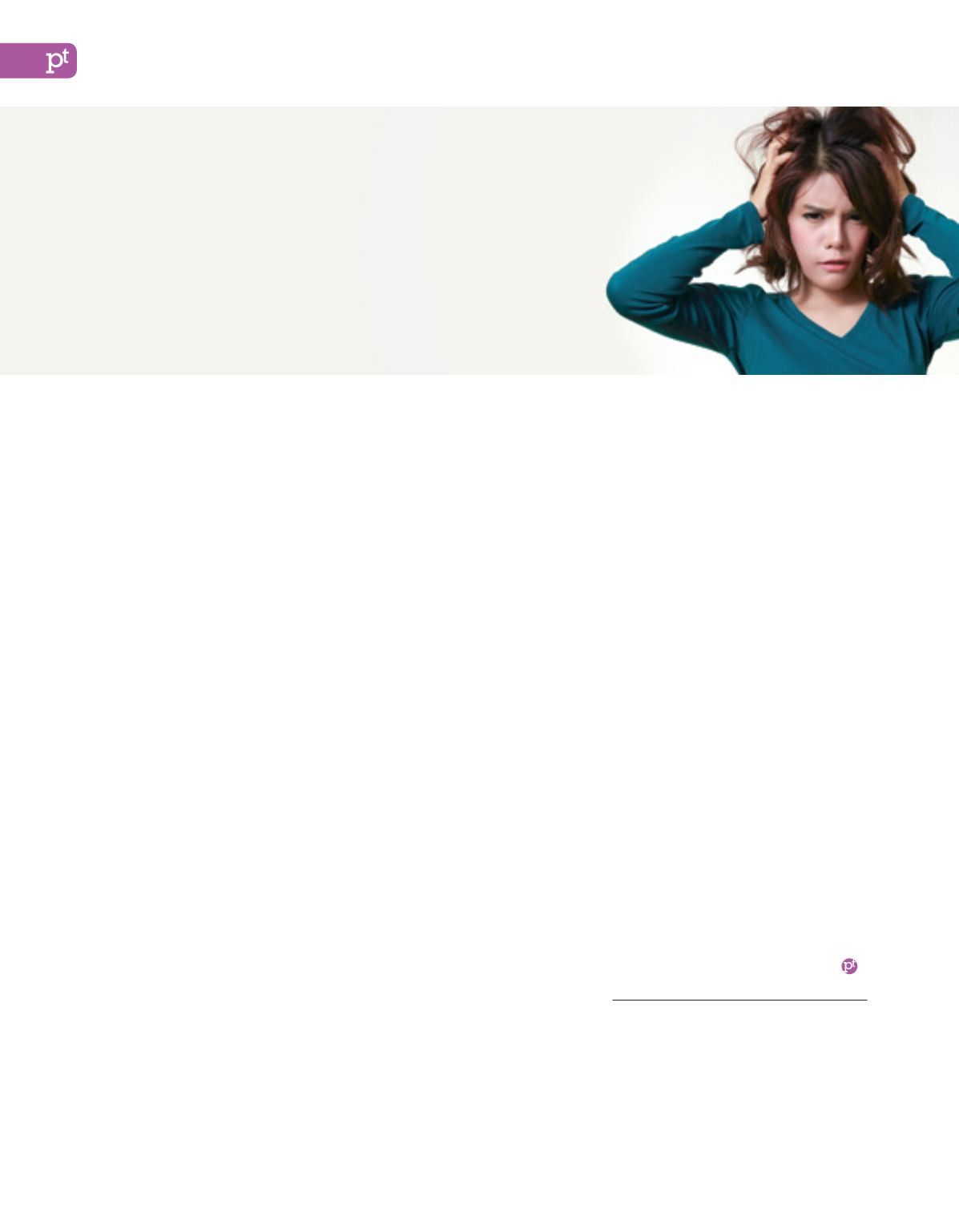
F
or 30 years I have been cutting
and colouring hair and the most
common topic brought up by
female clients is the way their hair
behaves during pregnancy and after the
birth of their child.
Shedding hair after pregnancy is
called postpartum hair loss. Not all
women will experience it and just
because you lose hair during one
pregnancy, it doesn’t necessarily mean
it will occur with all pregnancies. Good
news is, if it is postpartum hair fall then
it should eventually return to normal.
It is hair ‘fall’ rather than loss because
the hair is still growing and follicles aren’t
damaged. During pregnancy hair grows
for a longer period, and strands sit in
the second stage of growth for longer
than usual. This whole change in the
growth cycle happens due to high levels
of Estrogen.
Having recently studied trichology,
the science of hair and scalp, I have
been taking a closer look at scalp
issues and hair fall, particularly that of
pregnant women.
When does hair fall start?
Postpartum loss generally starts from 12
weeks after delivery and can continue
for several months. Breastfeeding may
prolong the hair fall process a bit, but
everyone is different.
Expect it to take a good three
months again for you to notice a
reduction in hair on the bathroom floor
or on the pillowcase. Hormones should
Hair stylist
Andrea Clark
explains postpartum hair loss
How Will Pregnancy
Affect my Hair?
go back to normal once the baby is
around one year.
While these changes to your hair are
happening, some women report oilier
than normal scalp. Treat yourself to a
scalp mask, pre-shampoo conditioning
or strengthening hair treatments, and use
a scalp toner to reduce the oiliness. Don’t
be afraid to shampoo your hair daily.
Cleaner hair and scalp will make you feel
better and make your colour look brighter.
How to reduce hair loss
Gentle brushing prior to showering
may lessen the amount of hair in your
plug hole. Treating yourself to a nice
soft bristle paddle brush is something
I recommend, as well as taking it easy
with hot styling equipment.
We have evolved not to need our
hair, so hair cells are the last to be fed.
Nutrients will be used first for the baby’s
development and our hungry hair cells
come last. Hair fall problems of any kind
can be helped with a balanced diet. A
protein rich breakfast is very important.
Eggs are the most complete source
of protein, containing all essential
amino acids - amino acids being the
building blocks of our hair. A delicious
protein vegetarian alternative for
breakfast is quinoa with fruit. Your hair
cell requirements are specific. Iron is
important, as is vitamin D and B12, and
vitamin C, to aid the absorption of iron.
Once hair becomes hard Keratin,
improvement of appearance is achieved
cosmetically and requires maintenance.
Trichotherapy is a recently developed
product range for thinning hair. It was
developed for women with general hair
fall and reduced volume, but can be
beneficial in improving postpartum hair
for women that find hair loss a concern
after 12 months. It is a three part regime
consisting of:
• A Volume Spray to give strength to
the hair.
• Special drops to maintain a healthy
scalp.
• Supplements.
The range was developed by a
trichologist, the late Philip Kingsley. His
hair care range is one of my personal
favourites for all hair types, with a lovely
range for kids too.
Hair colour
I usually see expectant mums after the
first trimester and am frequently asked if
it is safe to colour hair while pregnant.
There are ammonia free colours and
colour technique options, like foiling,
lowlighting, highlighting, balayage and
ombre. With these paint on options, the
colour does not touch the scalp, if this
is a concern. Ammonia free bleach and
tints also have little or no fragrance.
Andrea Clark is hair stylist and artistic
director at The Mandarin Salon,
Mandarin Oriental hotel. Philip Kingsley
products are available to buy at the salon.
/
luxury-spa/the-mandarin-salon/
advice
30


